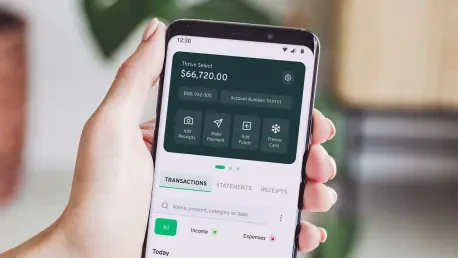Visa Inc. has made a significant leap forward in payment application design with the public unveiling of its Visa Product Design System (VPDS). This platform, initially launched internally in 2018, is now available to a wider audience and is poised to redefine how secure and accessible payment applications are developed. By offering a well-established system that addresses industry needs, the VPDS reduces the complexity involved in crafting secure payment systems. This follows Visa’s strong tradition of addressing design challenges, offering developers proven methodologies, and greatly enhancing the efficiency of their work.
Enhancing Efficiency and Consistency
Resources and Improvements
VPDS provides indispensable resources that ensure design and development consistency, allowing product teams to create seamless payment experiences efficiently. The platform not only decreases design time by 20% and development time by an estimated 25% but also offers a robust structure that includes comprehensive design libraries, accessibility standards, and detailed documentation. Visa has demonstrated these improvements with implementations such as Visa Flexible Credential and Visa Payment Passkey, highlighting the platform’s potential to transform the way developers approach payment system design.
The inclusion of accessibility-tested components within the design libraries ensures that applications are not only user-friendly but also inclusive. Developers can access these components for both web and mobile platforms, allowing them to build more comprehensive solutions from the onset. This capability works in line with global accessibility regulations, enabling developers to meet emerging standards without the need for extensive revisions.
Design Tokens and Framework Support
One of the standout features of the VPDS is its integration of design tokens, regarded as the fundamental elements of design. These tokens capture critical design decisions in a reusable format, allowing seamless integration into popular tools like Figma for design adjustments in areas such as color and typography. The platform’s compatibility with major web and mobile development frameworks—including Angular, Flutter, React, and HTML/CSS—ensures broad usability and ease of adoption.
Visa’s commitment to keeping its codebases updated as these frameworks evolve plays a crucial role in streamlining the development process. This proactive approach minimizes duplication, aligns coding practices with design specifications, and fosters an environment where developers can focus on innovation rather than reinventing the wheel. As a result, Visa empowers developers to deliver coherent and effective solutions quickly and efficiently, reflecting the company’s dedication to technological advancement and efficiency.
Bridging Collaboration for a Unified Financial Ecosystem
Strengthening Partnerships
With the public release of VPDS, Visa aims to provide a unified standard that will facilitate collaboration among its partners, ranging from fintech companies and startups to banks. By standardizing tools and frameworks, the platform aids in the development of scalable and secure payment solutions that effortlessly integrate with existing commerce systems. This alignment with Visa’s ongoing mission underlines the importance of simplicity and security in modern payment experiences, paving the way for an interconnected financial technology ecosystem.
Furthermore, the platform’s emphasis on collaboration signals Visa’s intent to foster an inclusive environment where partners can contribute to and benefit from standardized practices. This approach not only enhances Visa’s value proposition to its partners but also contributes to a larger trend in the industry: the move towards seamless and collaborative financial solutions. Visa’s innovative stance underscores the potential for VPDS to become a cornerstone in the development of future-focused payment applications.
Future Implications and Trends
Visa Inc. has achieved a remarkable milestone in payment application design by unveiling its Visa Product Design System (VPDS) to the public. Initially introduced within the company in 2018, this innovative platform is now accessible to a broader audience, poised to transform the development of secure and user-friendly payment applications. The VPDS offers a streamlined solution to the complexities of building secure payment systems by providing a robust system that aligns with industry demands. This move is consistent with Visa’s long-established tradition of tackling design challenges head-on. It offers developers tried-and-true methodologies that significantly boost their productivity. With the introduction of VPDS, organizations and developers gain access to a suite of tools and resources that not only simplify the design process but also enhance the overall security and efficiency of payment systems. As Visa continues to innovate, the VPDS stands as a testament to its commitment to advancing payment technology and design for the future.









